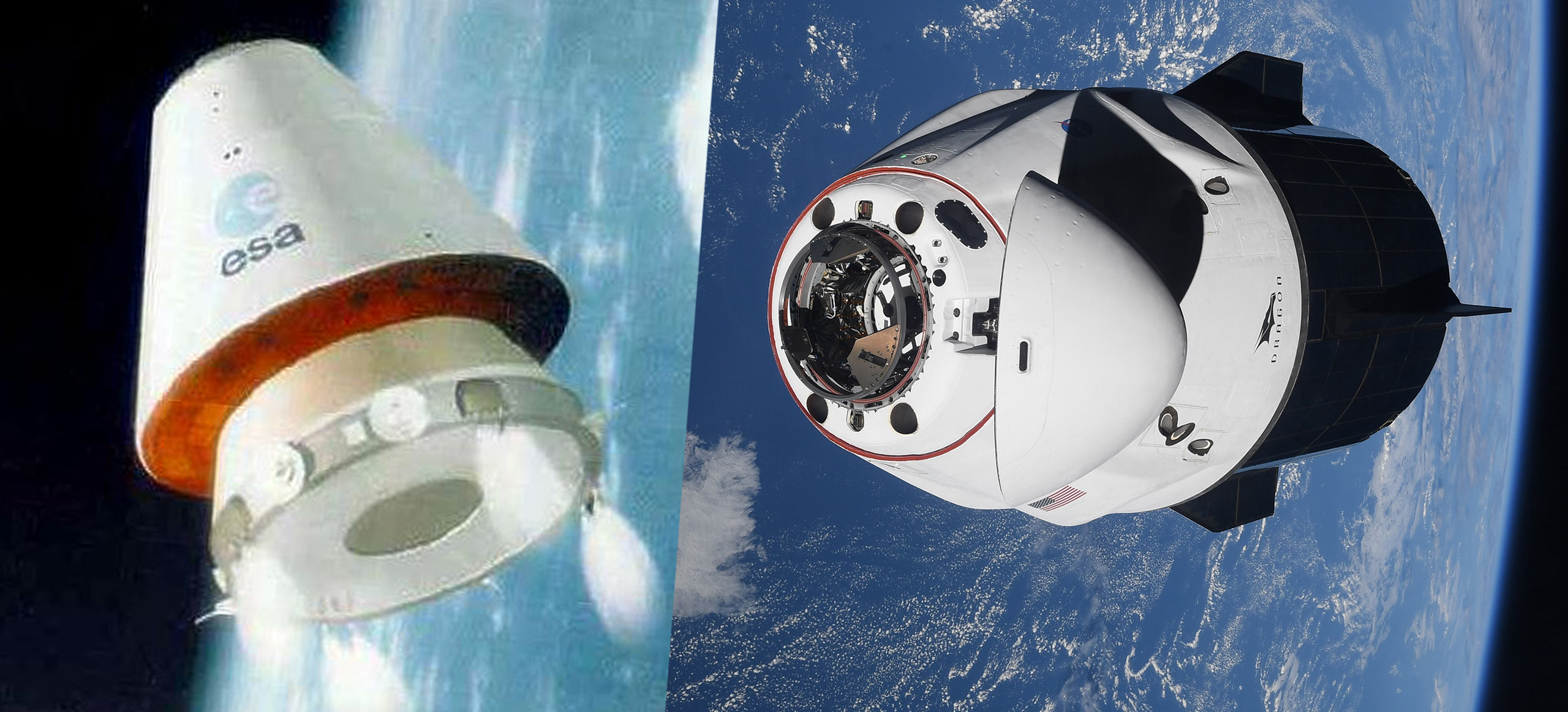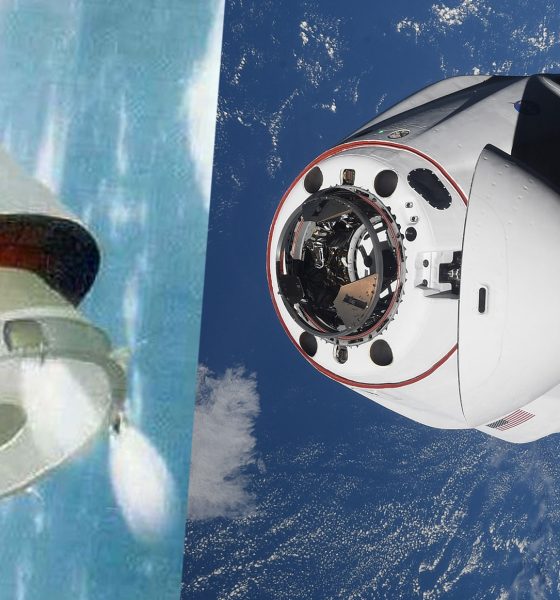

News
European astronauts want their own spacecraft after decades of reliance on Russia, NASA, SpaceX
On February 16th, the European Space Agency (ESA) held the European Space Summit in Toulouse, France, offering European Space Agency leaders and European Union (EU) member states an opportunity to discuss the present and future of European spaceflight.
The central idea circulating the summit was evident: Europe wants to reassert itself as a global leader in space exploration. While ESA and member states continue to make exceptional contributions to robotic space exploration and – to a lesser degree – rocketry, leaders at the summit believe that there is still a large amount of untapped potential within the European space industry. ESA hopes to fill these gaps while tackling the societal, economic, and security challenges that come along with it. The ESA’s goal is to grow as a space fairing nation and compete side by side with the United States, Russia, and China on all fronts – including the possible creation of their own domestic human spaceflight program.
ESA Director-General Josef Aschbacher was encouraged to speak on the subject, stating that “I am very happy to accept President Macron’s proposal to establish a high-level advisory group on ‘human space exploration for Europe’.” “This decision will shape what Europe will look like in the decade to come. We have to involve experts from all walks of life and mainly from non-space, for example, historians, economists, geopolitical experts, explorers on Earth, and philosophers to fully grasp all its implications and help us take [sic] the right decision.”
Organizations such as the European Association of Space Explorers (ASE) have strong opinions on the future of the European Space Agency. The ASE represents the over 45 European astronauts and cosmonauts who have been flying to space since 1978 – including several ESA astronauts that most recently flew to and from the Internation Space Station on SpaceX’s Falcon 9 rocket and aboard Crew Dragon.
Released in a three-page manifesto titled, “EUROPEAN ASTRONAUTS’ MANIFESTO ON THE OCCASION OF THE EUROPEAN SPACE SUMMIT”, the organization expressed its passion for human spaceflight and wrote to encourage the ESA to further develop a program that might one day allow the European Union to launch its own astronauts.
“A Europe that projects itself as a leading society must have the capabilities to set its own goals, and to decide for itself how far it wants to go in space exploration, united in our European values,” the document stated. “We now have a unique window of opportunity to accelerate and become a fully recognized partner of the global space endeavor.” An advisory group has been put together by the ESA to further explore these possibilities and is set to report back to the ESA on their findings at the next ESA Council of Ministers held in November 2022.
“Between now and summer, we want to come up with more specific European targets and ambitions for manned space travel,” he said through an interpreter. “We need to know what our priorities are, have the data to back it up and prepare the choices we are going to take for the November [ESA] ministerial meeting.”, stated Aschbacher. ESA has repeatedly attempted to develop its own crewed spacecraft in the past, including the “Crew Rescue Vehicle” (one variant shown in the header image), Crew Space Transport System, and Hermes spaceplane.
Among the conversations of human spaceflight, the summit also revealed additional initiatives the ESA plans to focus on as they further develop a more independent space program.
The ESA presented three “accelerators” or objectives that they aim to focus on while ramping up their space program. “Space for a Green Future”, “Rapid and Resilliant Crisis Response”, and “Protection of Space Assets”. According to the ESA, the three programs are described as the following:
“Space for a Green Future” aims to use data derived from Earth observation satellites to help Europe act to mitigate climate change and to support reaching a carbon-neutral economy by mid-century.
“Rapid and Resilient Crisis Response” seeks to better use space data, cognitive cloud computing, and intelligent interconnectivity in space to support those in charge to provide the vital responses to crises on Earth.
“Protection of Space Assets” will contribute to preventing damage to the European space infrastructure and avoid disruption to its economically vital infrastructures such as power supplies and communications links due to space weather conditions.

News
Tesla FSD fleet is nearing 7 billion total miles, including 2.5 billion city miles
As can be seen on Tesla’s official FSD webpage, vehicles equipped with the system have now navigated over 6.99 billion miles.

Tesla’s Full Self-Driving (Supervised) fleet is closing in on almost 7 billion total miles driven, as per data posted by the company on its official FSD webpage.
These figures hint at the massive scale of data fueling Tesla’s rapid FSD improvements, which have been quite notable as of late.
FSD mileage milestones
As can be seen on Tesla’s official FSD webpage, vehicles equipped with the system have now navigated over 6.99 billion miles. Tesla owner and avid FSD tester Whole Mars Catalog also shared a screenshot indicating that from the nearly 7 billion miles traveled by the FSD fleet, more than 2.5 billion miles were driven inside cities.
City miles are particularly valuable for complex urban scenarios like unprotected turns, pedestrian interactions, and traffic lights. This is also the difference-maker for FSD, as only complex solutions, such as Waymo’s self-driving taxis, operate similarly on inner-city streets. And even then, incidents such as the San Francisco blackouts have proven challenging for sensor-rich vehicles like Waymos.
Tesla’s data edge
Tesla has a number of advantages in the autonomous vehicle sector, one of which is the size of its fleet and the number of vehicles training FSD on real-world roads. Tesla’s nearly 7 billion FSD miles then allow the company to roll out updates that make its vehicles behave like they are being driven by experienced drivers, even if they are operating on their own.
So notable are Tesla’s improvements to FSD that NVIDIA Director of Robotics Jim Fan, after experiencing FSD v14, noted that the system is the first AI that passes what he described as a “Physical Turing Test.”
“Despite knowing exactly how robot learning works, I still find it magical watching the steering wheel turn by itself. First it feels surreal, next it becomes routine. Then, like the smartphone, taking it away actively hurts. This is how humanity gets rewired and glued to god-like technologies,” Fan wrote in a post on X.
News
Tesla starts showing how FSD will change lives in Europe
Local officials tested the system on narrow country roads and were impressed by FSD’s smooth, human-like driving, with some calling the service a game-changer for everyday life in areas that are far from urban centers.

Tesla has launched Europe’s first public shuttle service using Full Self-Driving (Supervised) in the rural Eifelkreis Bitburg-Prüm region of Germany, demonstrating how the technology can restore independence and mobility for people who struggle with limited transport options.
Local officials tested the system on narrow country roads and were impressed by FSD’s smooth, human-like driving, with some calling the service a game-changer for everyday life in areas that are far from urban centers.
Officials see real impact on rural residents
Arzfeld Mayor Johannes Kuhl and District Administrator Andreas Kruppert personally tested the Tesla shuttle service. This allowed them to see just how well FSD navigated winding lanes and rural roads confidently. Kruppert said, “Autonomous driving sounds like science fiction to many, but we simply see here that it works totally well in rural regions too.” Kuhl, for his part, also noted that FSD “feels like a very experienced driver.”
The pilot complements the area’s “Citizen Bus” program, which provides on-demand rides for elderly residents who can no longer drive themselves. Tesla Europe shared a video of a demonstration of the service, highlighting how FSD gives people their freedom back, even in places where public transport is not as prevalent.
What the Ministry for Economic Affairs and Transport says
Rhineland-Palatinate’s Minister Daniela Schmitt supported the project, praising the collaboration that made this “first of its kind in Europe” possible. As per the ministry, the rural rollout for the service shows FSD’s potential beyond major cities, and it delivers tangible benefits like grocery runs, doctor visits, and social connections for isolated residents.
“Reliable and flexible mobility is especially vital in rural areas. With the launch of a shuttle service using self-driving vehicles (FSD supervised) by Tesla in the Eifelkreis Bitburg-Prüm, an innovative pilot project is now getting underway that complements local community bus services. It is the first project of its kind in Europe.
“The result is a real gain for rural mobility: greater accessibility, more flexibility and tangible benefits for everyday life. A strong signal for innovation, cooperation and future-oriented mobility beyond urban centers,” the ministry wrote in a LinkedIn post.
News
Tesla China quietly posts Robotaxi-related job listing
Tesla China is currently seeking a Low Voltage Electrical Engineer to work on circuit board design for the company’s autonomous vehicles.

Tesla has posted a new job listing in Shanghai explicitly tied to its Robotaxi program, fueling speculation that the company is preparing to launch its dedicated autonomous ride-hailing service in China.
As noted in the listing, Tesla China is currently seeking a Low Voltage Electrical Engineer to work on circuit board design for the company’s autonomous vehicles.
Robotaxi-specific role
The listing, which was shared on social media platform X by industry watcher @tslaming, suggested that Tesla China is looking to fill the role urgently. The job listing itself specifically mentions that the person hired for the role will be working on the Low Voltage Hardware team, which would design the circuit boards that would serve as the nervous system of the Robotaxi.
Key tasks for the role, as indicated in the job listing, include collaboration with PCB layout, firmware, mechanical, program management, and validation teams, among other responsibilities. The role is based in Shanghai.
China Robotaxi launch
China represents a massive potential market for robotaxis, with its dense urban centers and supportive policies in select cities. Tesla has limited permission to roll out FSD in the country, though despite this, its vehicles have been hailed as among the best in the market when it comes to autonomous features. So far, at least, it appears that China supports Tesla’s FSD and Robotaxi rollout.
This was hinted at in November, when Tesla brought the Cybercab to the 8th China International Import Expo (CIIE) in Shanghai, marking the first time that the autonomous two-seater was brought to the Asia-Pacific region. The vehicle, despite not having a release date in China, received a significant amount of interest among the event’s attendees.








